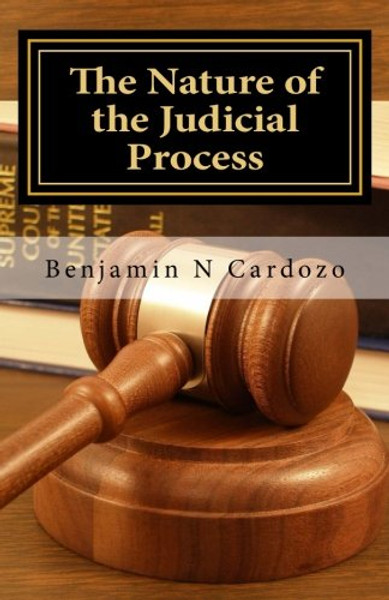Product Overview
Benjamin Nathan Cardozo has often been held up as one of the leading Supreme Court Justices in history, despite serving a mere six years on the high court (1932-38). Prior to this tenure, he served on the New York Court of Appeals, one of the principal courts of the nation, particularly during his time, from 1913-1932. Cardozo's opinions on interstate commerce, conflict of laws between federal and state, and congressional powr are still required reading not only for law school students, but also for those engaged in understanding the general manner in which Constitutional law is developed and regarded. This book, first published in 1921, is a series of four lectures by then Judge Cardozo outlining his method of judicial process. The first lecture lays out a philosophical method. He explores the implications of Constitutional priority as well as the principle of stare decisis. 'Stare decisis is at least the everyday working rule of our law.' Cardozo is well aware of judicial power, be it in the Supreme Court or the lower courts. 'Every judgment has generative power,' he wrote, 'it begets in its own image.' However, precedent is not all powerful, and a good dose of reason and logic must be present in decision making. In his second lecture, Cardozo looks at the issues of history (apart from precedent and particular case law), tradition and sociology in the judicial process. These all speak to the way in which society influences and shapes what kinds of judicial decisions and processes are needed. The third lecture develops this further, even going so far as to have the subtitle 'The Judge as Legislator.' This goes to the heart of one of the principles heavily in debate in the current Supreme Court and lower court selections. However, this kind of 'judicial activitism' is not the sole province of one political side or the other. Cardozo writes, 'sometimes the conservatism of judges has threatened for an interval to rob the legislation of its efficacy.' However, in speaking of the role of judge as legislator, Cardozo states, 'he legislates only between gaps. He fills the open spaces in the law. How far he may go without traveling beyond the walls of the interstices cannot be staked out for him upon a chart.' Cardozo argues that this is far from a new way of thinking, and that this is precisely how the great tradition of the common law developed. Late in the third and throughout the fourth lecture, Cardozo looks at the issue of the subconscious or unconscious development of law and process for judges. This happens in legislation, too, Cardozo argues - when laws are examined in judicial settings, their dissection often reveals unintended and unknown aspects. The same must be true for the judicial process. Cardozo reasserts the principle of following precedent in a practical sense, and argues that that judicial process, being a human one, is bound by certain situations, but that the process as a whole is self-correcting. 'The eccentricities of judges balance one another.... Out of the attrition of diverse minds there is beaten something which has a constancy and uniformity and average value greater than its component elements.' Cardozo's philosophy and thinking on the nature of the judicial process may not be to everyone's liking, but it has a strong place and influence in modern American judicial practice, and is presented in terms clear enough to make interesting reading even for those outside the legal profession.








